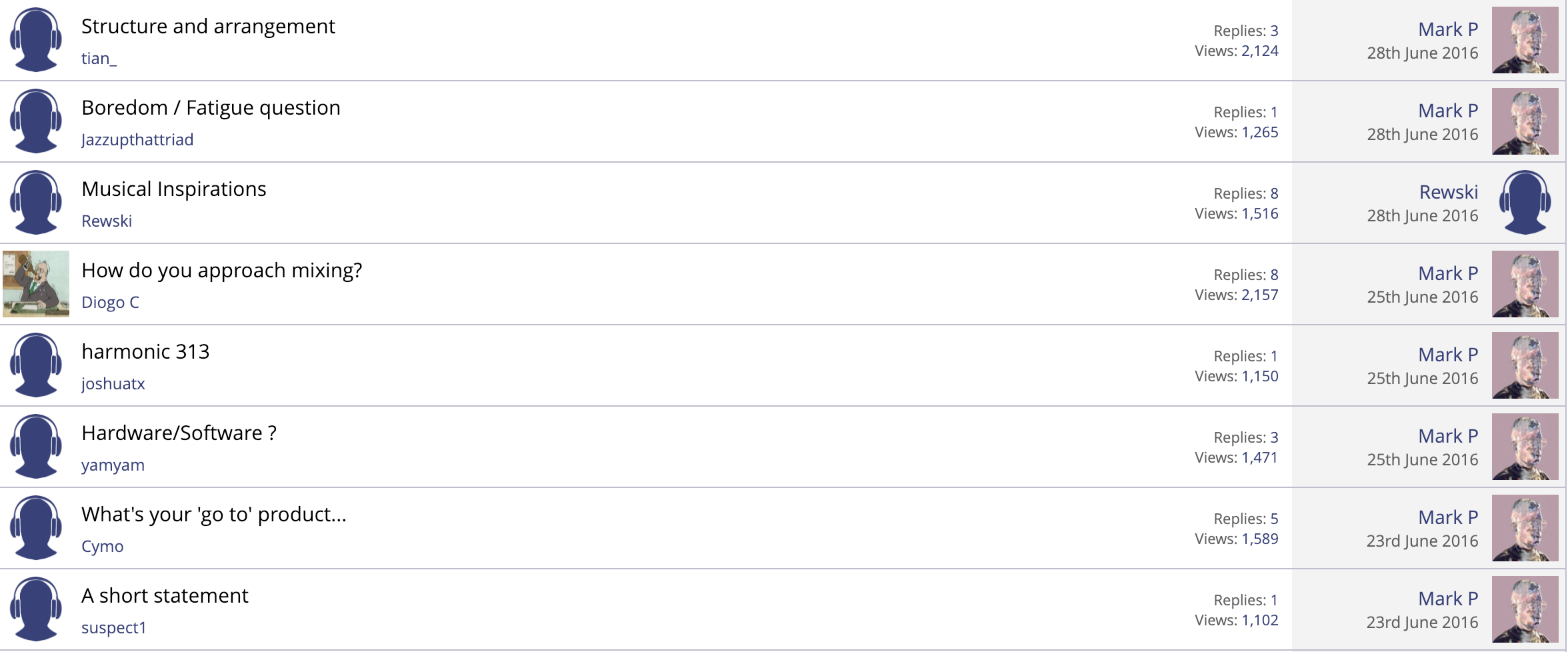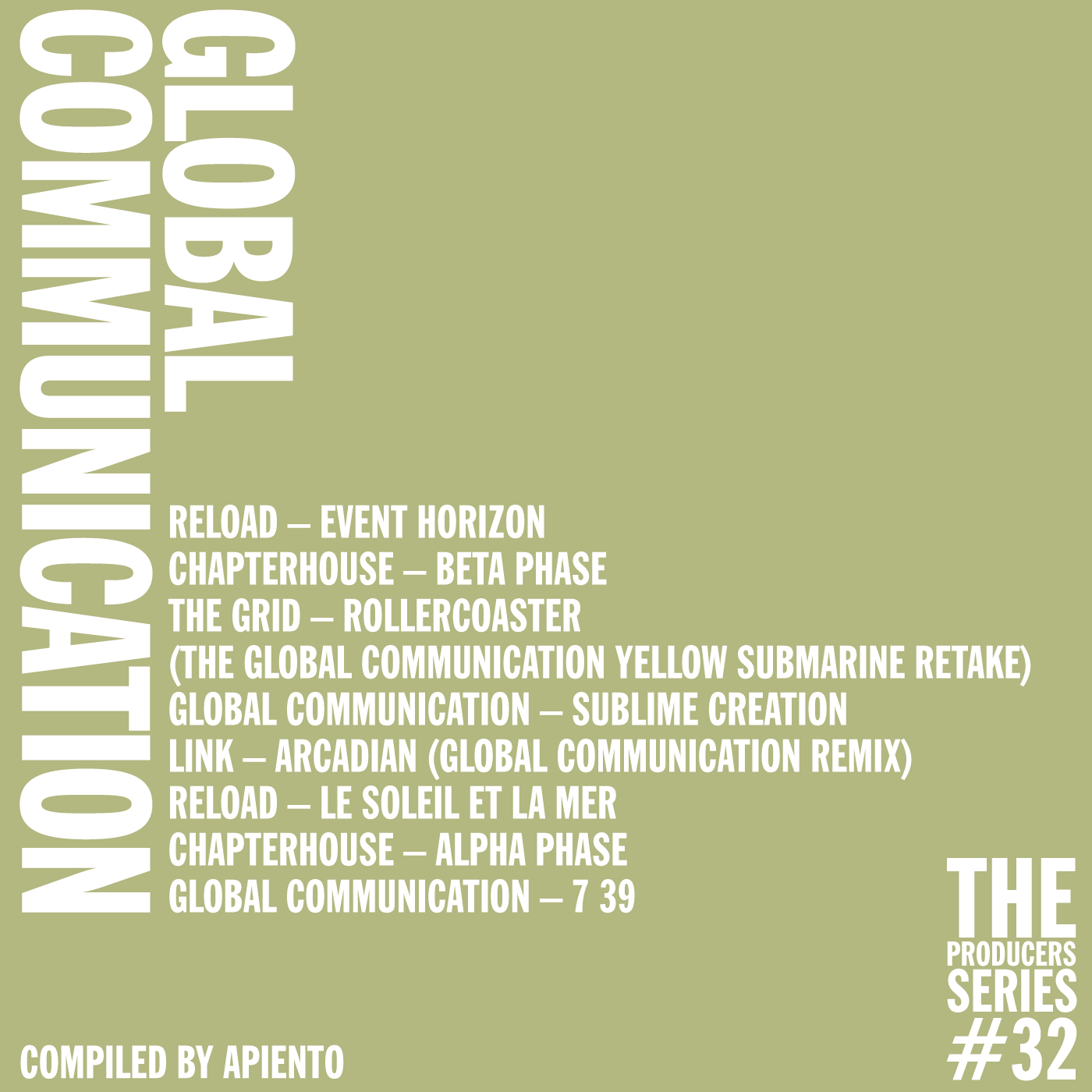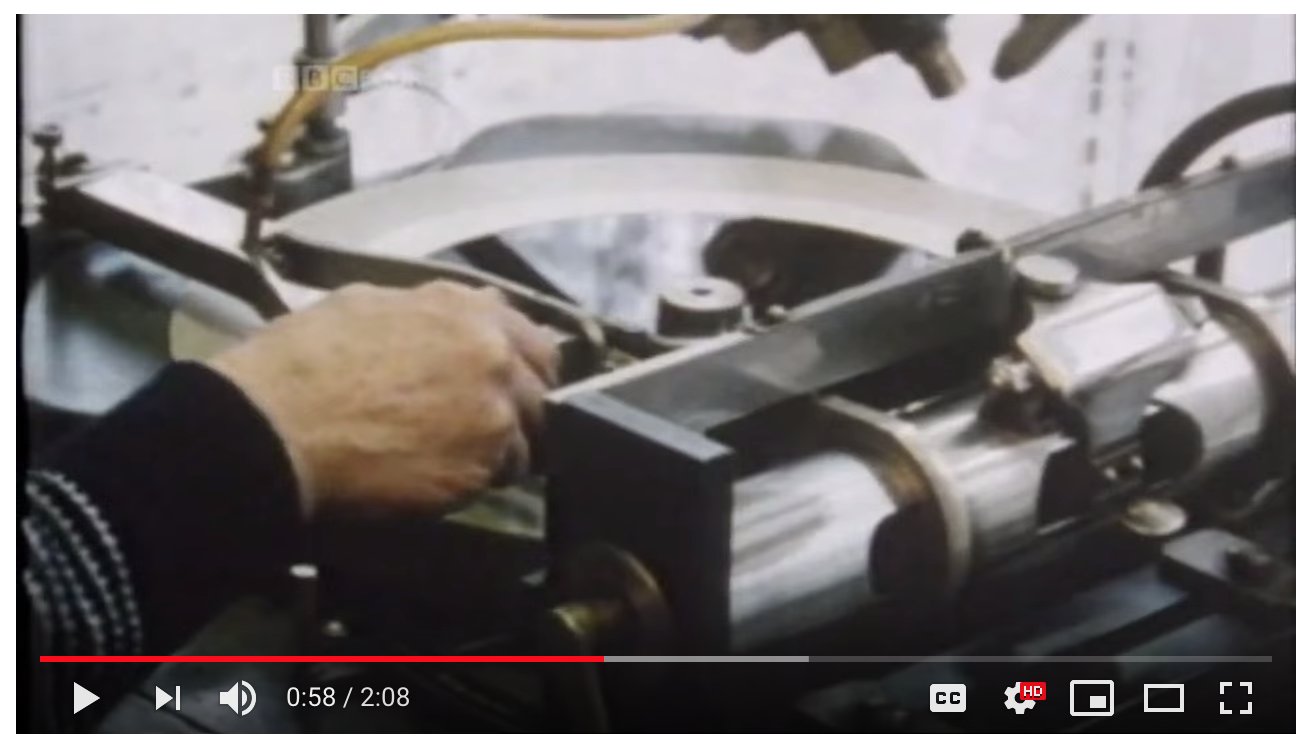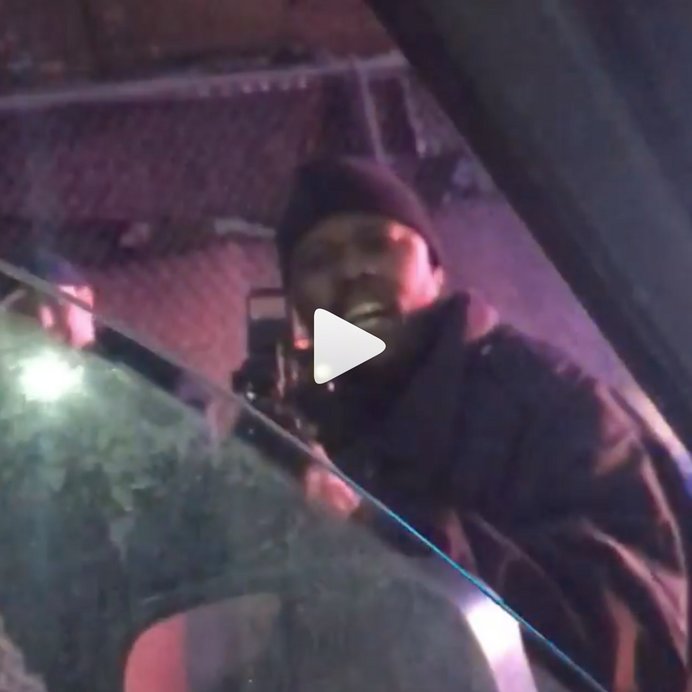Producers Series 32 - Global Communication
Ok this is a bit of a cheat as there are some Reload tracks on here but thats Mark Pritchard with Tom often on board so thats fine. Honestly it was really hard to put this mix together. Most people know lots of their music but you don't want to leave off some of the greats. And they are great. A mixture of melody, massive ambient sound and big bottom end. A foundation that many of us grew up on of Detroit Techno and Chicago House melded in the ambience of the 70s and beyond. It's weird you know.
I've a couple of weird links to this stuff. I used to manage Tom Middleton for remixes way back when but I don't ever remember asking about this stuff. Not sure why... Me and my friend Dean O'Connor (now Sigur Rós manager) also were one of the first people to license one of their tracks for a compilation we did called 'Narcosis' which actually sounds pretty good now bar a Country and Western techno record. Anyway, we digress...
There is a really brilliant Q&A with Mark Prichard on the horribly named Gearslutz (its a music making forum hence the awful name) where he really breaks down how they did things and using what equipment. I mean it makes no odds really as you need the talent that came together in that room at that period of time to do much of what they did but here's a few excerpts to check. This is kept pretty much as is on the site to keep the energy...

Question (User James Lehmann): You probably get bored of talking about 76:14 but that album does still sound ridiculously good - obviously the music is fantastic, but the textures, depth and fullness on there contribute a great deal to the tremendous 'listenability' of that album, at least for me. It's like sinking into a hot bath! Would you care to share some of the main gear & techniques you and Tom used to compose and record it?
Answer (Mark Pritchard): Ok casting my mind back some how to early 90s 
Gear wise it was -
A Casio FZ-1 - Akai S950, Juno 106, SH101, Jupiter 6, Yamaha TX81Z which i still have and it still works  Piano/Rhodes-ish sound in Ob-Selon Mi-Nos is that. Kawai K1... We were trying to get the depth of Vangelis but didn't have a CS80, actually I had one later but it was well after the Global stuff. So it was the Juno 106 for some pads but we would pitch shift it with a zoom unit. And the signature reverb sound was a Alesis Quadraverb Chorus reverb, it was noisy. And detuney. Richard Aphex used one as well coincidentally I knew because I could hear it on his stuff. He was using DX100 a lot into the Quadraverb. KAWAI Q80 Sequencer. Later Cubase on Atari. But I would say up to around and including 7614 it was all KAWAI Q80.
I'm actually listening to the album to remind myself, much easier! Ok
14:31 - Ob-selon Mi-nos - Tx81Z for the theme, K1 choir sound, SH101 high arpeggio. Space blip sounds SH101 probably sampled them as I didn't have 2 101's but I did have an MC-202 around that time so maybe its done live on that. Synth bass Juno 106. Tom tweaking the 101 live as the track is going down. Would have gone to DAT. Probably did 2 takes and picked the best one.
We did borrow keyboards from friends we def used a Korg Wavestation, thats on track 3 and we used it for Reload 'Le Soleil Et La Mer'. I had a Boss RDD-20 Digital delay we used that a lot. Lots of white noise and rumbles probably from the SH101 and Juno 106, we loved a whoosh back then... 
Synth percussive sounds on 9:39 Jupiter 6. Not sure what that choir was but it was probably from a classic piece and we would have looped a note, filtered it and stuck it in the Quadraverb. Sounds like K1 again for digital effects on 9:39.
To avoid hiss issues we would layer up ambient high end drones or sounds and put them in the Quadraverb no direct signal.
7:39 Bass Sounds like TX81Z Lately Bass edited. Using the same sound higher up for the other riff. Juno 106 for the chords.
0:54 Various friends from over the world called my answer phone if we didn't know someone in certain countries some people did their best efforts! I think Spanish or Italian was a guy from Manchester. The child's voice was Mark Darby's daughter. Mark Ran Mighty force records in Exeter who released Aphex's first record which also had Tom's first track into the world on it.
8:07 and 5:23 - Not sure what that pad is but I reckon Korg Wavestation. Guitar Andy from Chapterhouse. Vocal pads that come in is Andy singing notes and sampled into the S3000 I reckon. I think by then i had the S3000.
White noise perc would have been Juno 106. Tweaked live through the track opening and closing env. Rhodes piano sound was a Rhodes disk for the FZ-1 which Matthew Herbert gave to us. Spacey effects Rhodes Chroma. Percussive bass sound Kawai K1.
4:14 - Percussive sound Kawai K1 or something from the Korg Wavestation. One Guitar note sampled from somewhere stuck into Quadraverb. Wobbly flourish that sounds like Jupiter 6. High string was probably Korg DW8000 as it sounds digital. Some of the white noise effects would have been TX81Z main white noise was always either the SH101 or Juno 106. The soft mallet sound i reckon was the Kawai K1. Breathing was Tom and we sampled it and put it through a Boss SE50 Multi effect. In the end I had a Boss SE50 and a Boss SE70 Sounds like we were sweeping the eq on the breathing as well live through the track.
12:1- It was choir samples again... Taken from somewhere. 1 note clean and then looped probably in the FZ-1 or the S950. Then Quadraverb again, loads of it. High synth note that holds all the way through is the Jupiter 6. Bass would have been Juno 106 or Jupiter 6. Actually I reckon its Jupiter 6.
I had a Studiomaster Session Mix 16 Gold Passive Mixer I think it was a 4 or 8 bus. Wasn't great tbh but you know you use what you have. Yamaha NS10 Monitors pretty much from 1990 - 1998. Until I couldn't take them anymore. Too many headaches from them... But to their credit the stuff we did in the 90s sounds a lot better than I thought it would have listening back, so the old rule that if it sounds good on NS10 it will sound good everywhere rang true.
They were powered from some cheap 200 quid amp, nothing special. My studio was a spare room in my parents house. Below their bedroom. A close family friend was a carpet layer and he came in and he built a room inside the room with cheap plasterboard and carpeted in grey carpet! The whole room, walls ceiling everything. Quite honestly we had no idea what we were doing. I think a friend of my dad had heard you need to have a dead sound in the room, so we did that. It worked though. And kept some of the sound out of the rest of the house, obviously at night I would have to hold it down! My parents were great and totally supportive and really helped take the pressure off early on and allowed me to live and work at home. That studio was in Crewkerne, Somerset.
We had no training at all, the only tips I picked up were from Head who works with PJ Harvey. He had a studio in Yeovil and I mixed some of the early Evolution records there. John Parish who also works with Polly also engineered for me sometimes when Head was away. But I would say after Evolution 3 it was all mixed at my place. Actually I did mix at another studio in Yeovil as well on a few tracks b4 I had enough gear to do it myself.
John Parish was also in a band called Automatic Dlamini - he sang and played bits of metal percussion. He played percussion for me on 'Peschi' and other Reload tracks. John's mum was Deputy Head at my school in Yeovil. When I mentioned to her that I wanted to do music she said 'oh my son makes music you should talk to him', and I met up with him. Which was very nice of him I have to say. Little things like that make a big difference for a 15 year old from the West Country like me. I remember telling the careers teacher that I wanted to make music and he said, 'forget it 1 in a million make it in music' :( Rob Ellis also in Automatic Dlamini and drummer in PJ Harvey also gave his time to talk to me back then. Good peoples!
When I remastered 76:14 it was all from the original DAT tapes. John Dent (don mastering engineer - Ed) mastered them. I have used him since around 1996. The Evolution re-issues are the same method. On 76:14 The original DAT tape sounded better than the original CD then after John did his thing it was a big improvement when going back to the original cd. So don't pay crazy money for an original  And we are talking very careful subtle methods of mastering, it was in no way cranked for level. John Dent is a legend, look him up on Discogs.
//
For people into making music its amazing information. You can get the whole Q&A HERE on Gearsl&tz. So on to the mix. As the tracks are really long I've done some edits but honestly, there's enough for another three so I may well do a more underground one at some stage thats on the weirder end of things. I also didn't touch the house stuff... Anyway, it is just brilliant music basically. If you want to check out more we recommend heading to their Discogs page and then getting lost in all the other projects that came via those two. Solo and beyond... Enjoy.




